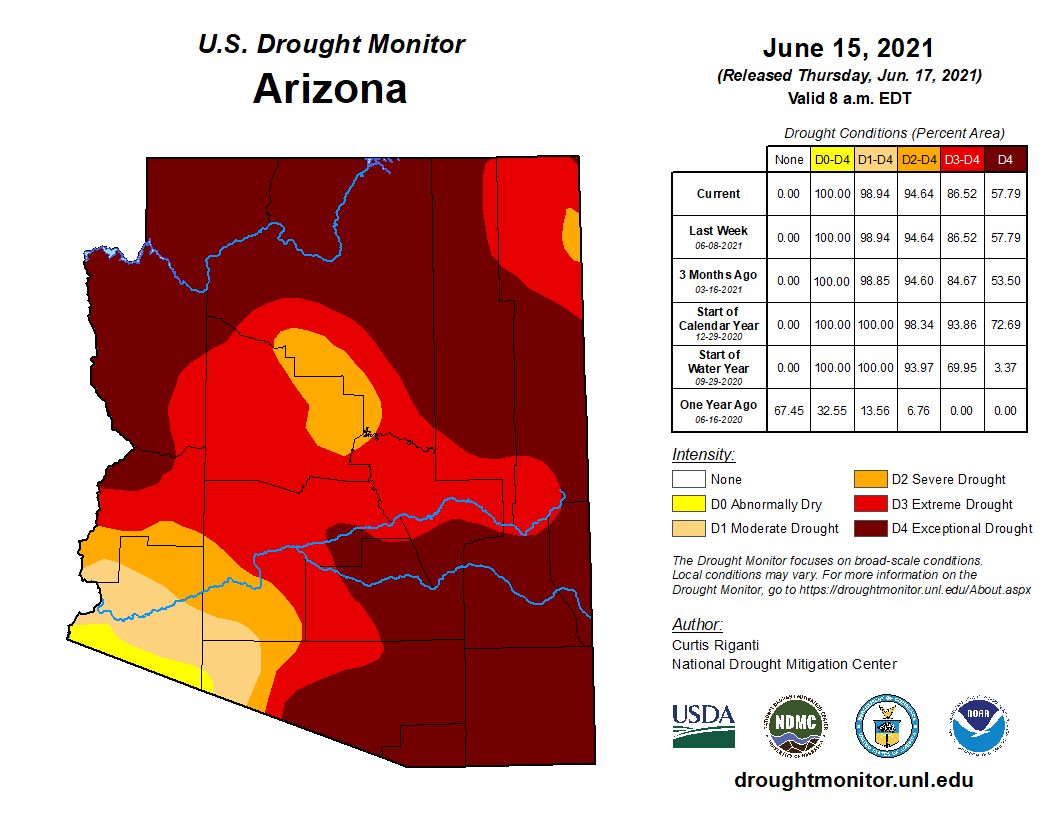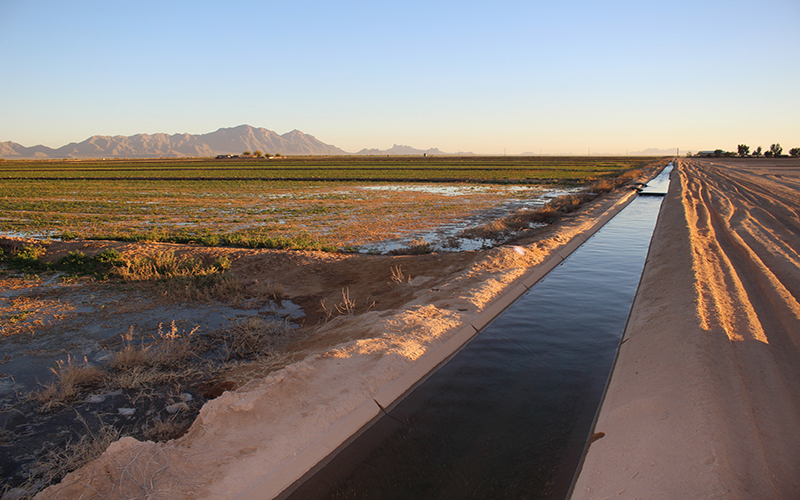PHOENIX – Arizona’s monsoon season officially ends Sept. 30, and this year’s rains already have made 2021 among the highest on record.
The season, which begins June 15, started off fairly dry, but once the monsoon rains arrived, they broke records in some areas of the state, Arizona State Climatologist Erinanne Saffell said. By the end of July, 84% more monsoonal rain had fallen in Phoenix than all of last summer, and drought conditions improved in parts of the state.
The Salt and Verde rivers watershed, which stretches across 12,500 square miles of central Arizona, had its wettest July and August in 1921, but 2021 wasn’t far behind. The 2014 season produced 6.34 inches of rain in Phoenix and spawned a Sept. 8 deluge dubbed the “storm of the century.” It was the seventh wettest monsoon on record. So far this monsoon, 3.88 inches have fallen in Phoenix, according to the National Weather Service.
“There was a period of time in July where we literally didn’t turn on our irrigation system for about 12 or 13 days consecutively,” said Dana Parish, DC Ranch golf course superintendent. “In our water budget we’ve probably saved close to $26,000 in water costs with the rain we’ve gotten over the last couple months.”
In addition to helping golf courses and other outdoor businesses, this year’s rains replenished reservoirs serving metro Phoenix.
“We’ve actually been able to moderate our drought with the summer precipitation, which is exceptional and amazing,” Saffell said. “We’ve actually had enough precipitation where we can put water into our reservoirs, which is unheard of in summer, typically.”
Roosevelt Lake, east of Mesa and among the largest reservoirs in the state, is 69% full, up 4 percentage points since July, according to Watershed Connection.
Normally, she said, the Valley has to wait for winter precipitation to help with drought conditions, as winter rain and snow is more consistent, and snowpack melting on higher ground helps replenish soil moisture with enough left to flow downstream. But this year’s summer rains helped, with the U.S. Drought Monitor improving by three levels out of five.
Despite the improvements, however, much of the state remains in long-term drought. And forecasters are predicting, with increasing confidence, a La Niña this winter. Statistically, La Niña events bring drier-than-normal conditions to much of the southern U.S., including Arizona.
The Salt River Project, one of the state’s largest utilities, advises residents to continue to practice water conservation despite the summer rains.



